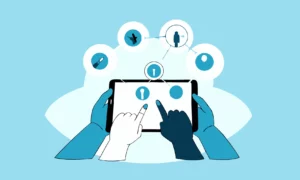In a world increasingly driven by digital interactions, it is vital that everyone, irrespective of their abilities or disabilities, has equal access to information. Web accessibility has evolved as a crucial aspect of this inclusivity, enabling a diverse range of individuals to navigate and understand the web. This article explores innovative techniques for enhancing web accessibility, ensuring a more inclusive digital world.
Web accessibility is the practice of designing websites, tools, and technologies to be usable by all people, especially those with disabilities. This includes visual, auditory, cognitive, and motor impairments. Innovative techniques for enhancing web accessibility have grown significantly, spanning from better use of HTML semantics to the implementation of machine learning models.
Improved Semantics and Structure
Semantic HTML is a fundamental way of enhancing web accessibility. It refers to the use of HTML markup to reinforce the meaning of the information in webpages rather than just to define its look. This means using appropriate HTML tags like <header>, <footer>, <nav>, and <main> to define the structure of the content, which can help screen readers and assistive technologies understand the page structure. Additionally, utilizing tags like <h1> to <h6> to indicate heading levels and <p> for paragraphs, improves the legibility of the content.
Alternative Text for Images
Images can enhance user experience but can also be a barrier to visually impaired users. Alt-text is a description of an image which gets read out by screen readers or displayed when the image fails to load. An innovative technique here is the use of AI to generate alt-text for images. Machine learning algorithms can analyze an image and generate a description, making the web more accessible for visually impaired individuals.
Inclusive Design and UI
Inclusive design principles aim at designing products usable by everyone. An innovative approach is to design adaptable UIs. Users should be able to adjust text size, contrast ratios, and color schemes to suit their needs. Furthermore, ensuring the website is fully navigable via a keyboard is crucial for those who can’t use a mouse.
Closed Captioning and Transcripts
For auditory-impaired individuals, closed captions and transcripts are vital. Advances in speech recognition technology have made automatic captioning and transcription services more accurate. These tools can convert spoken language into written text, enabling those who are deaf or hard of hearing to understand audio content.
Accessible Rich Internet Applications (ARIA)
ARIA is a set of attributes that define ways to make web content and web applications more accessible. This is especially useful for dynamic content and advanced user interface controls. ARIA landmarks, roles, and properties help assistive technology users navigate, find content, and interact with elements more efficiently.
User Testing and Feedback
Finally, one of the most innovative methods is to include users with disabilities in the testing and feedback process. After all, they are the most qualified to identify accessibility issues and suggest improvements.
Conclusion
Enhancing web accessibility is not just about compliance with standards, it is about inclusivity and equal access to information. By leveraging these innovative techniques, we can build a digital world that is truly accessible to all.



































